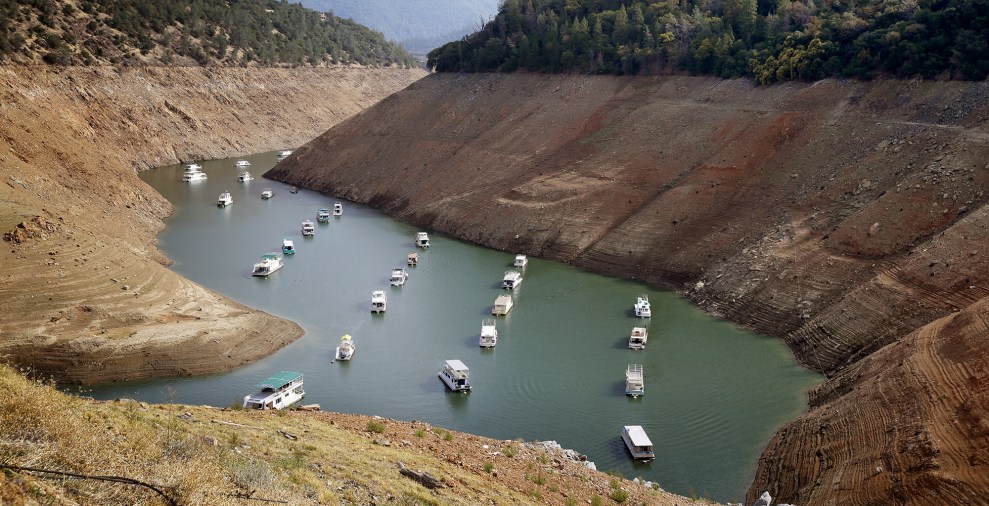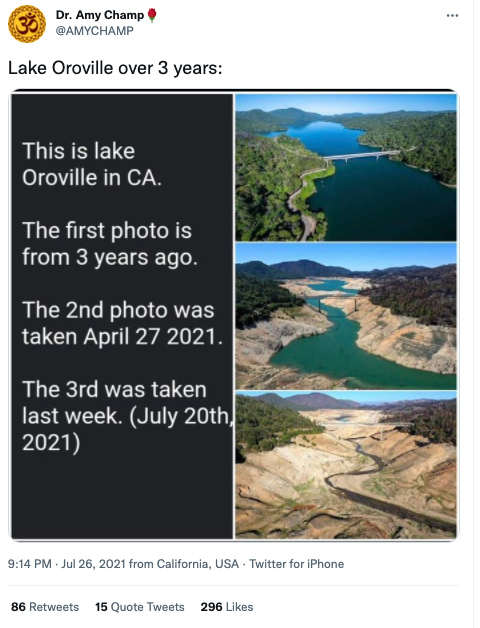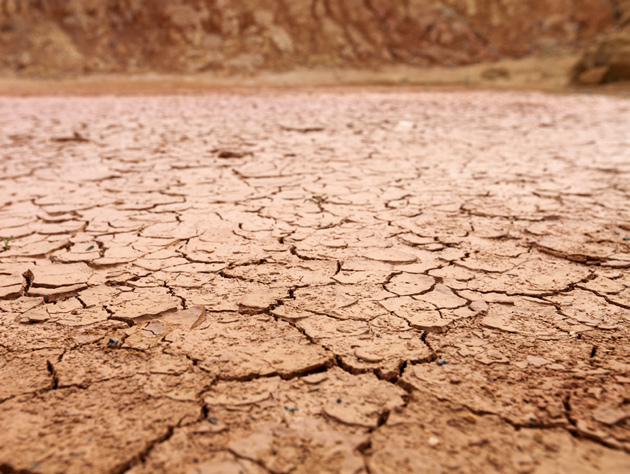
Lake Oroville. October 30, 2014.Rich Pedroncelli/AP
This story was originally published by Bulletin of the Atomic Scientists is reproduced here as part of the Climate Desk collaboration.
I grew up in typically dry, inland southern California, so droughts are not entirely unexpected for me, my neighbors, or my colleagues. Since I was born in 1987, the state has endured four long droughts: the 1987–1992 drought, the 2007–2009 drought that contributed to one of the state’s worst wildfire seasons, the 2011–2017 drought that is California’s longest drought on record, and the current drought that started in 2020 and continues to worsen. I grew up hearing warnings about water shortages and high temperatures.
While experiencing a few years of drought is not entirely new to residents of the arid Southwest, what is new is the intensity and duration of current droughts, because of climate change caused by our dependence on fossil fuels to meet our energy needs.
There is also evidence that what is considered a typical climate in California is unusually wet compared with long-term historical trends for the region. In the future, climate change is expected to cause droughts to be longer and more intense in terms of precipitation shortage. That will affect California’s water supply and other systems that depend on it, namely hydroelectric generation resources.
California is already experiencing the effects of climate change-induced droughts on hydroelectric resources. Just last week, the Edward Hyatt Power Plant at Lake Oroville had to cease hydroelectric generation for the first time since its construction in 1967.
Water levels at Lake Powell, a reservoir on the Colorado River upstream of Lake Mead that supplies Hoover Dam and its export of electricity to California, also fell to their lowest level since the 1930s. During the 2011–2017 California drought, utilities compensated for the loss of hydroelectric generation by increasing their reliance on natural gas power plants to prevent blackouts, causing a 33 percent increase in annual carbon dioxide emissions from 2012 to 2014.

As we are seeing with Lake Powell, hydropower generation does not simply decrease proportionally to decreased water availability: If water reservoir levels drop below the height of the intake levels for hydroelectric turbines, the facility must cease electricity production entirely. When reduced water availability is combined with record-breaking temperatures and wildfires, such as the Bootleg Fire in Oregon that threatened transmission lines carrying power to California, the loss of hydropower can result in high electricity prices and potential rolling blackouts.
The ability of hydroelectric resources to provide the short-term benefits of avoiding additional natural gas use (and its associated emissions), as well as the long-term benefits of enabling the development of reliable and affordable zero-carbon electricity systems, depends on the availability of water both in total and during times when the electric grid most needs it.
Climate change is expected to alter the patterns of water availability for hydropower by intensifying and lengthening storms during wet periods and droughts during dry periods. Even if the total amount of water provided to reservoirs does not change, a change in the timing of precipitation affects the ability of hydroelectric power plants to act as backup systems for variable renewable energy resources.
For example, in California, precipitation has historically occurred in the fall and winter months as snow, building a large snowpack in the state’s high-elevation mountains. During the spring, the snowpack melts, sending water to reservoirs for storage. This ensures that water is available to meet high summer demands for both water and electricity. In a warming climate, however, precipitation in the fall and winter is expected to intensify and fall as rain instead of snow. Instead of rebuilding mountain snowpack, this rain will increase reservoir inflows. A sudden increase in runoff can cause reservoirs to fill to capacity, forcing operators to release any additional inflow to avoid structural failure, which means that not all the precipitation will be stored.
During the summer, drought events are expected to last longer than past events, and the water stored in California’s reservoirs may not be sufficient to meet the summer’s highest electric demands. If California plans its zero-carbon electricity system based on historical hydroelectricity availability, but gets less availability because of climate change, the state may either not meet its zero-carbon electricity goals or run the risk of blackouts.
Moving forward, there are two classes of actions that California can take to reduce the impacts of climate change on hydroelectric resources. The first is to account for the effects of climate change on water availability in the operational practices of hydroelectric reservoirs, by developing updated water release schedules that expect future, more variable inflows rather than historical inflow patterns. The specifics of what such changes will look like will vary from reservoir to reservoir, since each reservoir is subject to different inflow patterns and operated under different constraints and priorities outside of hydroelectric generation.
The second set of actions is to account for the effects of climate change on the availability of hydroelectric generation as part of the resource mix that will supply the future, zero-carbon electric grid. Including these impacts in the state’s capacity expansion modeling, which informs planning decisions, will give planners a better understanding of the extent to which other resources (such as geothermal or energy storage, for example) will need to be further expanded to compensate for changes in hydroelectric resource availability in a warmer climate.













